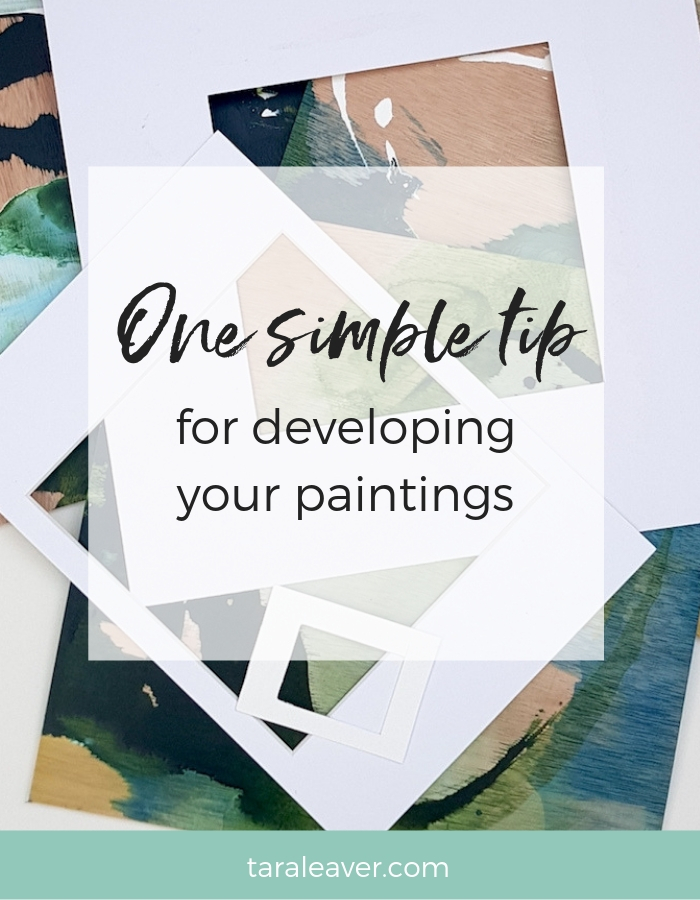
I love this one – it often tends to blow people’s minds a bit when I suggest doing it in my courses, and it really can be so helpful for seeing with fresh eyes.
What is it?
Using a viewfinder.
For anyone unfamiliar, a viewfinder is, at its simplest, a piece of card – usually white – with an aperture cut out of the middle, or two L shaped pieces that allow you to adjust the size of the aperture. The first kind is better if you need one hand free.
The aperture can be any shape or size, depending on what you want to do, but usually it’s a square or rectangle. It’s like a little mount, or matte, for those of you across the pond.
It’s super easy to make one yourself to the size and shape you want; I have a few of different sizes for different purposes. It doesn’t need to be fancy; I’ve used scrap paper folded in half, and snipped the aperture with scissors. Card is sturdier though.
So how can you use a viewfinder for developing your paintings? Here are some ideas:
To help you choose your focus when painting from life
Whether that’s a landscape en plein air, a still life indoors, or working with the figure, a viewfinder can help you hone in on which part feels most exciting and interesting to commit to canvas or paper.
It also means you can compose a landscape, for example, with the strongest possible composition {see below}, rather than trying to transcribe exactly what’s in front of you. It gives you the power to choose as an artist, and to develop your eye for design, to make strong paintings that work.
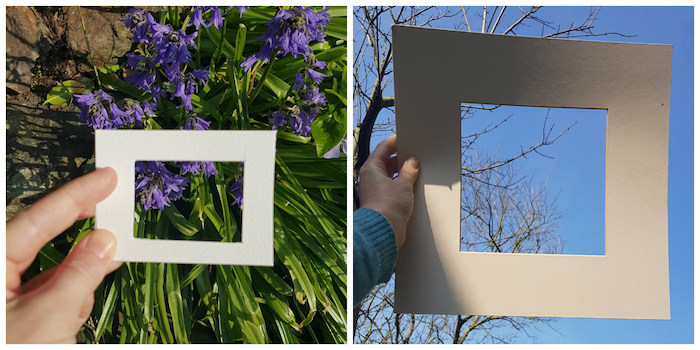
To make abstract paintings
I hear a lot of people saying they want to make abstract, or at least ‘more abstract’ art, but find it difficult coming from a representational or realistic background. It can feel challenging to be looking at something we recognise and can name – a tree, a lake, a vase of flowers – and understand how to ‘abstractify‘ from it, or loosen it up.
Enter the viewfinder. Extrapolating from the first point, you can hold it up not just to a subject, but to a painting, whether your own or someone else’s, and find abstract shapes, lines, and compositions in it. Any painting or scene can be made abstract with the help of this little piece of card.
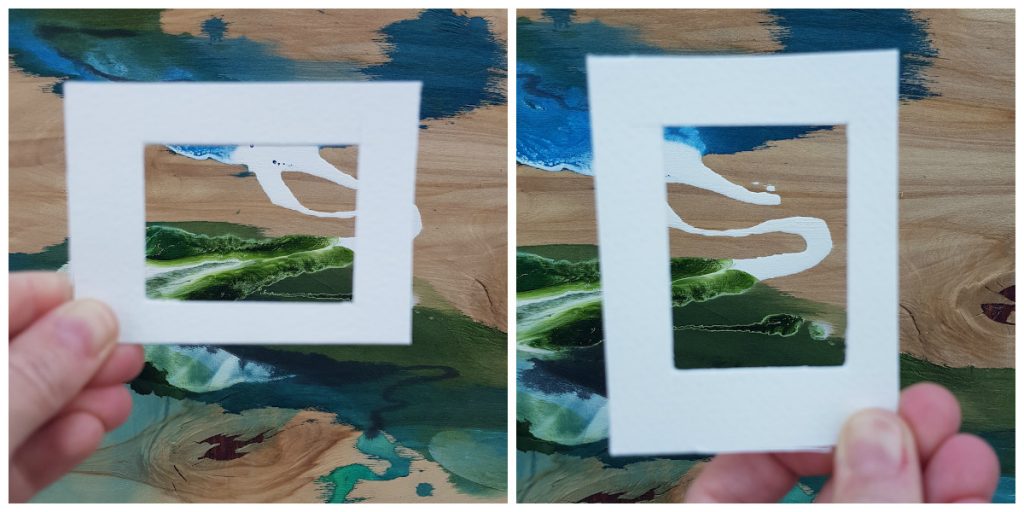
To generate ideas for new compositions
Using a smaller viewfinder on a larger painting can give you ideas for composition for future ones. You can either:
- hold it in one hand and sketch what you’re seeing in little boxes in your sketchbook – this can be done quickly with coloured pencil or even just graphite or charcoal, which can make it easier to see if a composition will work before launching in with paint on a canvas
- or hold it up in different places over the painting and use your phone camera to take some quick snaps. These can then also be manipulated with apps like Snapseed or A Color Story for further experimentation.
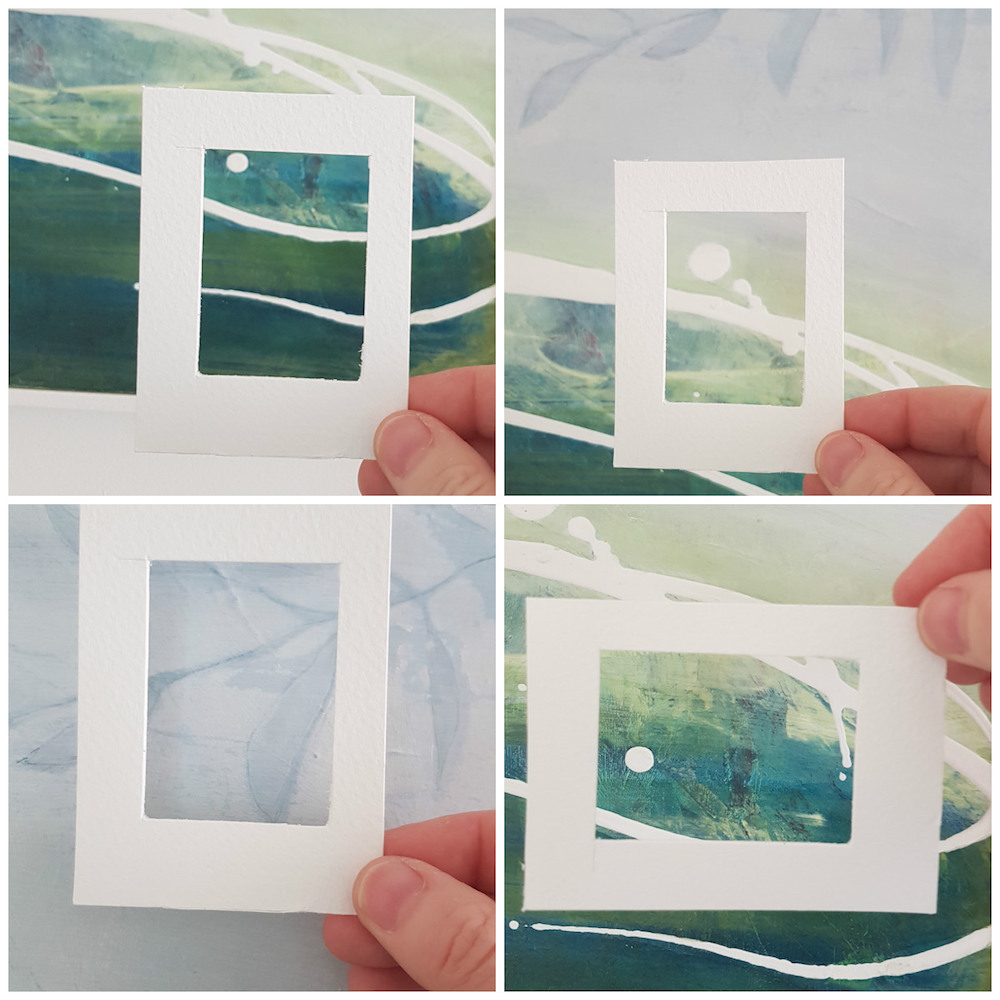
To see if a painting is finished by getting a better understanding of what works
Using a small viewfinder, you can
- check out different parts of your painting through it as a way to see what’s working
- see whether any areas need more attention or finishing
- learn to recognise how to create a completed painting that hangs together as a whole.
I’ve found that using a viewfinder can help me improve the quality of my work and develop a deeper understanding of how a painting hangs together, as well as generating ideas for new compositions. Not bad going for a little piece of card!
Do you use a viewfinder? Got any tips for us about different ways to use it? Please share in the comments!

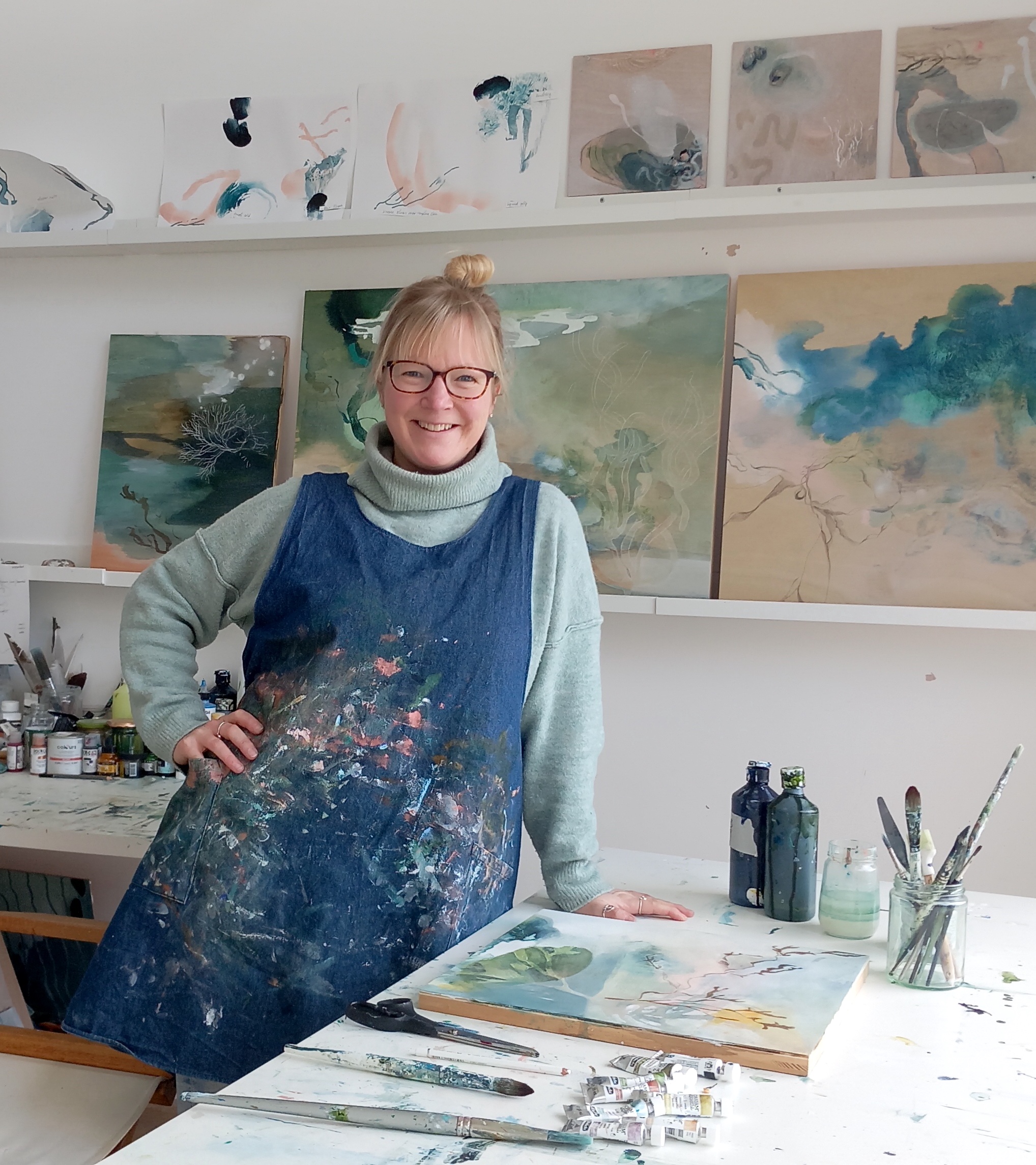
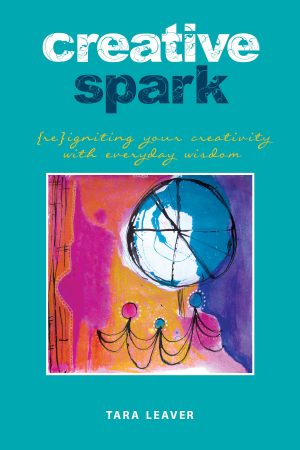
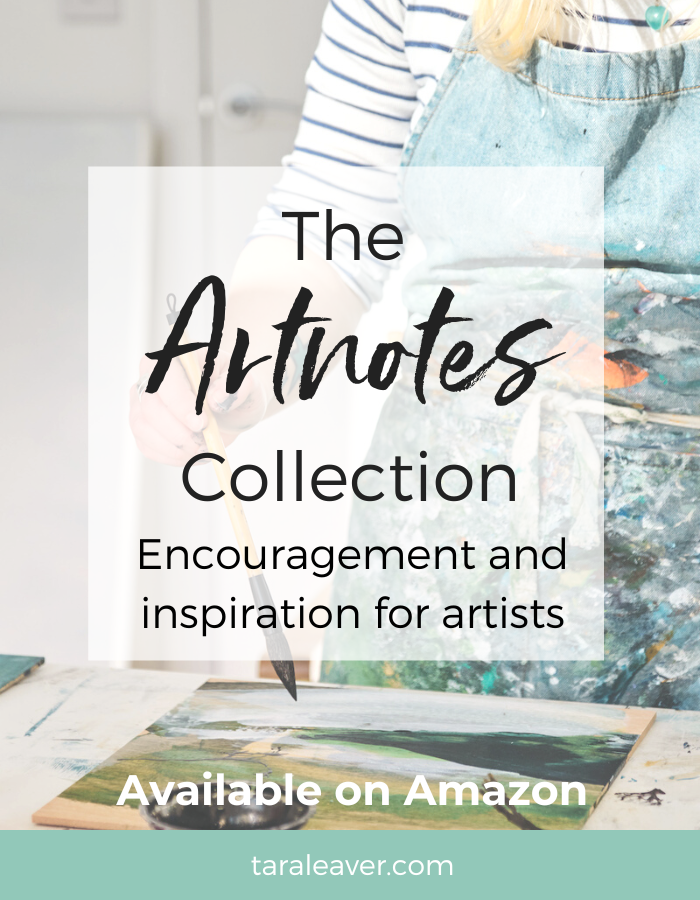
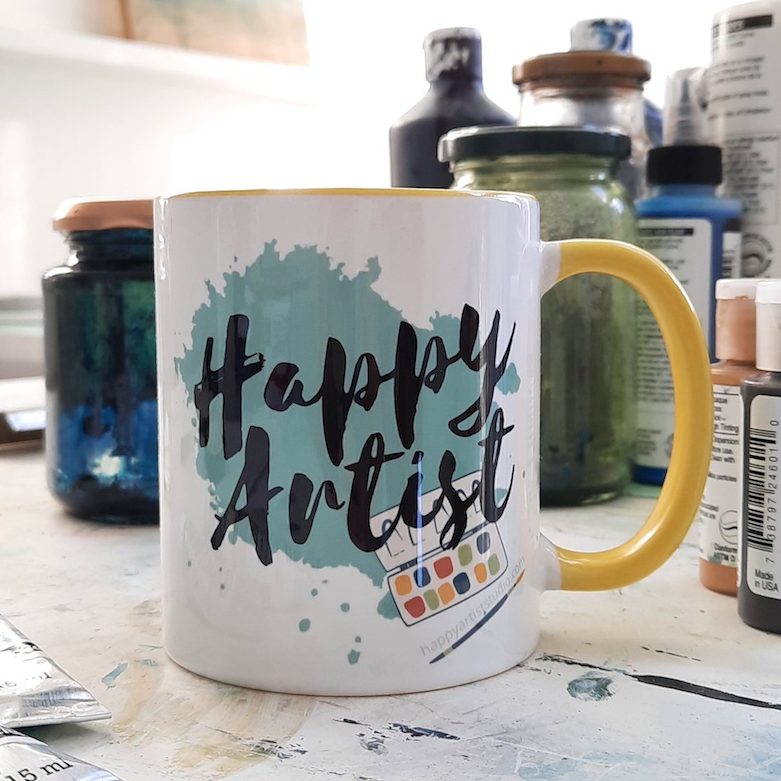
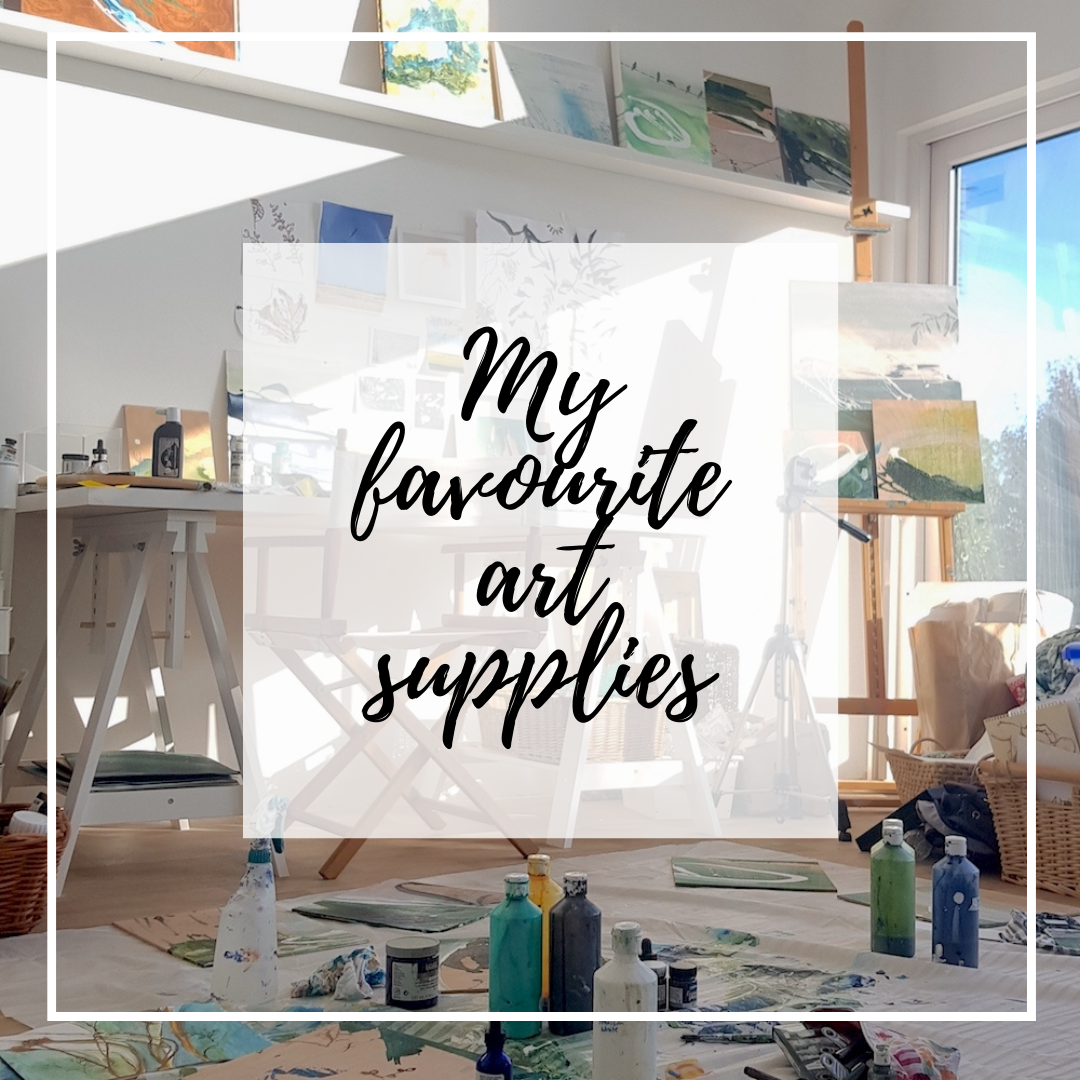
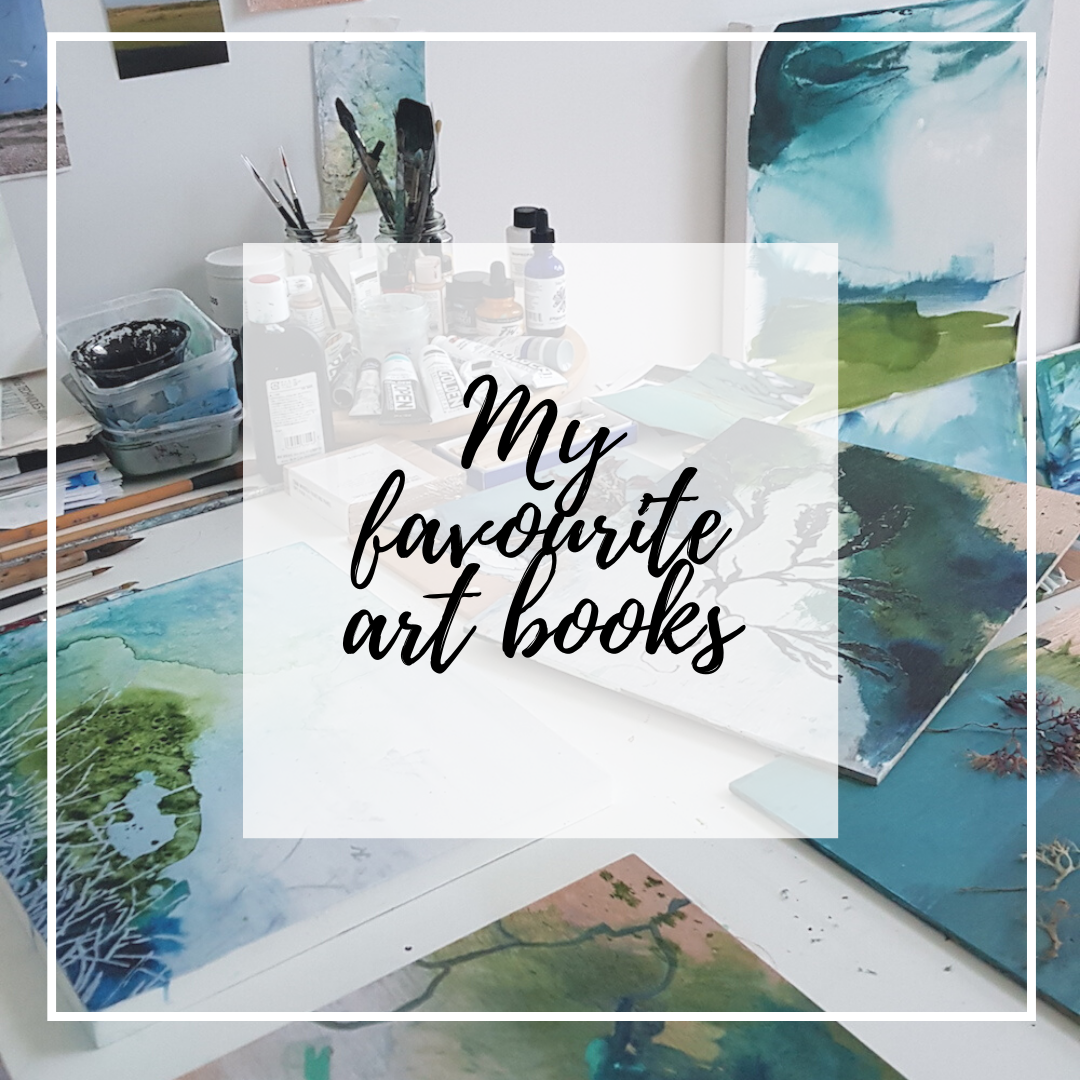
Tara, you’ve been the single biggest motivator in my returning to art. Your journey has inspired me no end.
I used this way back in art school and it really was helpful. I’ve forgotten so much but this is so useful to help zone in on the composition.
Thank you for sharing this trick and wish you all the best in continuing your inspiring journey.
Ah Sharon that’s lovely to hear, thank you and I’m so glad my work has helped you. Sometimes remembering little things like this can bring in new energy or remind us that we do know how to do it!
I often use my smart phone as a view finder. I find that I can see quickly what’s needed when I view something as a small image on my screen! Then I also have a record of work in progress too, so it has the double benefit of making me worry less about messing things up if I decide I didn’t like the next layer(s).
Well that’s genius! Easier than faffing about with a piece of card when you’re out and about, with the double bonus of having a record of what you saw through it for later! Thanks for sharing this Teresa, great idea.
Thanks, Tara, for the nudge. I had been using two ‘L’ – shaped pieces of card that i could make into a variety of sizes. Put them away, now i will use them again!
My phone is always nearby! It us used often too check on my piece as I’m working. I rotate the picture, or crop it, look at the composition in black and white, and also enhance the colours. That really helps me to yay or nay parts of my piece.
What did we do before phones?! 😆